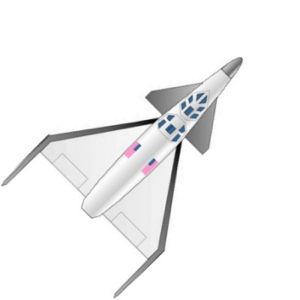
Home - Search - Browse - Alphabetic Index: 0- 1- 2- 3- 4- 5- 6- 7- 8- 9
A- B- C- D- E- F- G- H- I- J- K- L- M- N- O- P- Q- R- S- T- U- V- W- X- Y- Z
Xerus

Xerus
Credit: XCOR
Status: Study 2016.
It could be used to take passengers or microgravity experiments on suborbital flights up to 100 km altitude, or as the first stage of a launch vehicle that could place 10 kg satellites into orbit. Cost objective was $ 500,000 per flight.
The Xerus would be powered by multiple XCOR liquid oxygen/hydrocarbon rocket engines. Propellant feed would be by piston pumps rather than turbopump on cost and reliability grounds. 220 N XCOR thrusters would be used for attitude control beyond the atmosphere. In the suborbital mission the main engines would cut off at 65 km altitude and Mach 4, followed by a ballistic flight to 100 km, re-entry, and then glide to a landing at the launch airfield. Rocket fuel reserves would exist to enable go-arounds in the case of a missed approach.
In April 2004, XCOR Aerospace received a license from FAA/AST to perform flights from Mojave Airport in Mojave, California. These flights of the Sphinx demonstration vehicle were designed to fly within the Earth's atmosphere. XCOR was not disclosing its schedule or certain design details of the Xerus, except that it would take-off and land from a conventional runway without a booster stage or carrier vehicle. Xerus would be powered by XCOR's own liquid rocket engines, but in 2005 NASA provided an RS-88 rocket engine for use in early tests of Xerus.
Family: New Space Tourism, Spaceplane, Suborbital, US Rocketplanes. Country: USA. Agency: XCOR.
 | Xerus Credit: © Mark Wade |
Back to top of page
Home - Search - Browse - Alphabetic Index: 0- 1- 2- 3- 4- 5- 6- 7- 8- 9
A- B- C- D- E- F- G- H- I- J- K- L- M- N- O- P- Q- R- S- T- U- V- W- X- Y- Z
© 1997-2019 Mark Wade - Contact
© / Conditions for Use